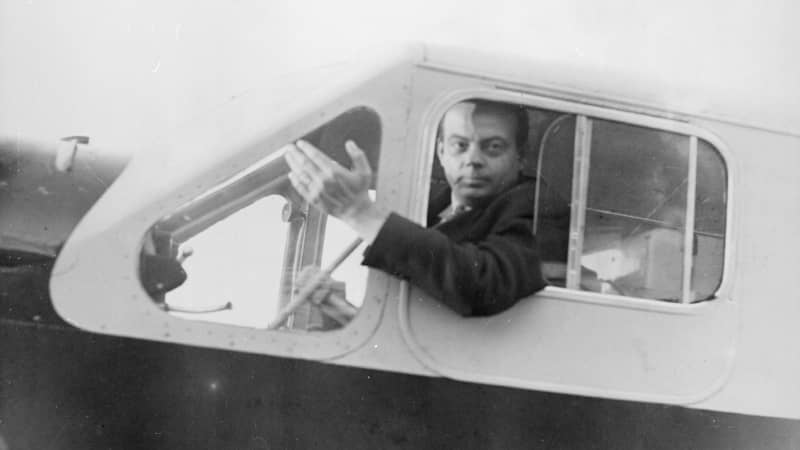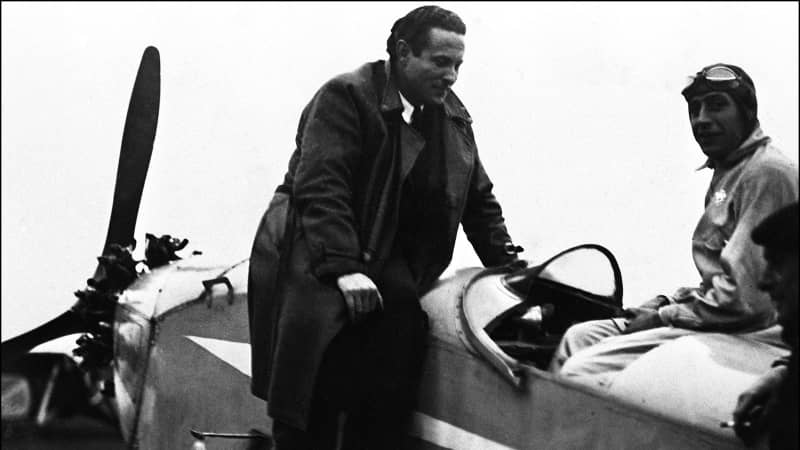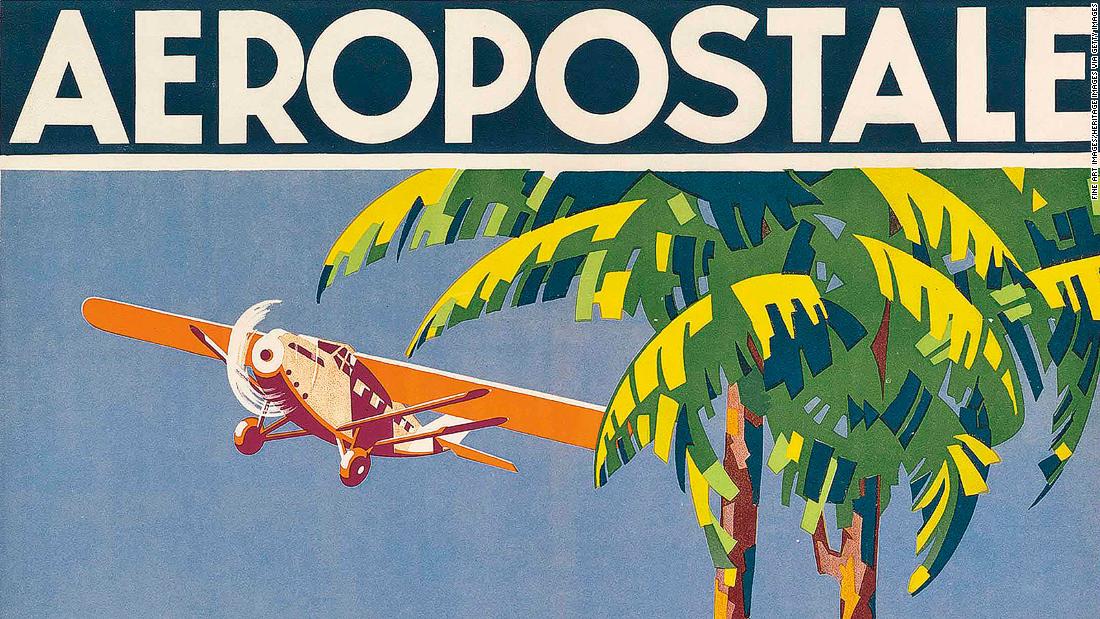(CNN) — What do two major national airlines, an American fashion retail brand, a large publicly listed industrial corporation, a Hollywood movie and several prize-winning literary works all have in common?
They are all linked to the extraordinary legacy of an airline that ceased to exist 90 years ago this year.
Despite its relatively short-lived existence, from 1918 to 1931, the “Compagnie générale aéropostale,” usually known simply as Aéropostale, left an indelible mark, both in the world of civilian aviation and in the public imagination.
Right at the end of World War I, French aviation pioneer Pierre-Georges Latécoère made a reality of his vision to establish a regular air link carrying mail between Europe and Latin America.
The firm that came to be known as Aéropostale was founded at the end of 1918 under the official name of “Société des lignes Latécoère.”
In the decade that followed, this enterprise would not only contribute enormously to the consolidation of air transportation as an essential service in different parts of the world, but also became synonymous with adventure and fearlessness. The story of Aerópostale is perhaps the last big epic tale of the era of exploration.
Aéropostale’s long route started in Toulouse, in the south of France. From there it crossed the Pyrenees to Barcelona, followed Spain’s Mediterranean coast to Alicante and then over to North Africa, which at the time was under Spanish and French rule.
The line continued south along Morocco’s Atlantic coast, with several waypoints along the way: Casablanca, Agadir, Cape Juby/Tarfaya and the present-day cities of Dakhla, Nouadhibou and Saint-Louis, until it reached its African terminus at Dakar, in Senegal.
Given the limitations of aircraft at the time, mail was then loaded on board ships that bridged the South Atlantic at its narrowest point, between West Africa and northeastern Brazil.
From there, the Latin American branch of Aéropostale took over. Its planes flew the mail all the way to Buenos Aires and beyond. The Argentinian capital acted as a hub from which multiple regional routes sprung, taking air mail across the Andes to Santiago de Chile, north to Paraguay and south towards Patagonia.
A magnet for adventurers
This enterprise was not for the faint hearted. In addition to the hazards of 1920s flying, which was a rather dangerous and uncomfortable job, Aéropostale’s pilots had to traverse vast regions under extreme climate conditions and devoid of any support infrastructure.
But this may also have been part of the allure.
The Andes’ 20,000-foot-high peaks presented a formidable obstacle to the fragile aircraft of the time. In one of the book’s passages Saint-Exupéry tells the story of his close Aéropostale companion Henri Guillaumet, who, after crashing his plane on an Andean glacier spent several days on an epic trek through snow and ice. He managed to reach a remote Argentinian settlement when he was on the brink of succumbing to cold and fatigue.
This sort of epic would be followed by “Terre des Hommes” (translated to English as “Wind, Sand and Stars”), about Saint-Exupéry’s own experience flying in the Sahara desert. Pilots had to rely on primitive navigation and there was often the risk of running out of fuel or experiencing technical difficulties. Pilots making emergency landings in the desert risked being captured by local nomadic tribes who would then attempt to ransom them.
This book also includes Saint-Exupéry’s own near-death experience, already in his post-Aéropostale period, after crash-landing in the Egyptian desert. Saint-Exupéry and his co-pilot endured a grueling desert journey in which they were close to dying of thirst before being rescued by a Bedouin tribesmen.

French writer and aviator Antoine de Saint-Exupery pictured circa 1935. His most famous book is “Le Petit Prince.”
Hulton Archive/Getty Images
This pioneering spirit was not exclusive to the pilots.
The story of Raymond Galtié is a case in point. Born in 1901 in the south of France, he joined the French navy’s submarine arm as a teenager. After serving throughout the World War I years, Galtié left the navy in 1922 to join Aéropostale, where he worked as a mechanic.
“Mechanics at that time were often flying together with famous pilots, such as Mermoz or Saint-Exupéry. They developed close friendships because they spent many hours together in those little, fragile aircraft,” says Sònia Galtié, Raymond Galtié’s granddaughter, who recently came across a trove of old family photographs.
This led her to further research the life of her grandfather and of Aéropostale. She came across several websites and forums which celebrate the memory of the airline and this close-knit community of people devoted to the advancement of aviation.
Raymond Galtié’s engagement with Aéropostale had a happy ending. He traveled the world, working at several of the firm’s outposts in Latin America and Europe and later went on to have a successful career with Air France.
But this was not the fate of the firm’s most famous pilots.
Mermoz, Saint-Exupéry and Guillaumet would all end their days tragically at the helm of their aircraft in the years following Aéropostale’s demise.
The latter two disappeared while on duty in the Mediterranean during World War II, in 1944 and 1940 respectively, presumably due to enemy action (an aircraft wreck found near Marseilles in 2003 has since been positively identified as Saint-Exupéry’s aircraft).
Mermoz meanwhile was lost in December 1936, when he was crossing the South Atlantic, in an incident which some have attributed to sabotage, although engine reliability issues may have been a more likely cause.

In May 1930, French aviator Jean Mermoz (center) who was the first pilot to fly from Rio de Janeiro to Santiago across the Andes.
STF/AFP via Getty Images
A long-lasting legacy
Although he remained inextricably linked to the aviation industry all his life and went on to build one of France’s largest aerospace businesses, the Groupe Latécoère, which still exists today, in 1927 Pierre-Georges Latécoère sold the air mail business to Marcel Bouilloux-Lafont, a French financier and politician who gave it a new name: “Compagnie Générale Aéropostale”.
By 1930 Aéropostale had grown into a massive logistics operation, transporting 32 million letters per year over 17,000 kilometers of air and sea routes (Aéropostale also operated a fleet of eight ships) that straddled three continents.
In that very same year, Jean Mermoz, one of the firm’s legendary pilots, would close the Atlantic gap at the helm of a Latécoère 28 seaplane loaded with 122 kilos of mail. It took 19 hours and 35 minutes for Mermoz to fly between Senegal and Brazil. Although regular ocean crossings would continue to be done by ship, Mermoz had shown that it was possible for a letter from France to reach Santiago de Chile in as little as four days.
But soon after reaching its zenith, Aéropostale suddenly folded.
The 1929 financial crisis severely impacted the firm and political instability in Brazil and Argentina added to the woes. In 1931 the French government denied an appeal for financial help and Aéropostale was liquidated soon after. Its assets were absorbed by the group of companies that would eventually become Air France.
The Aéropostale brand was however retained by Air France, which used it for some of its mail and cargo activities, operated jointly with the French postal service (La Poste), until 2000.
La Poste then got full ownership of the business, which was rebranded as Europe Airpost, before selling it again, this time to an Irish company called ASL Aviation Group, which operates passenger and cargo flights to this day under the ASL Airlines brand.
Aéropostale’s heritage lives on in the Southern Hemisphere too.
The firm’s Argentinian network, known as Aeroposta Argentina, kept operating well after the demise of its European parent, since it provided the only civilian regular air service in the country. It would eventually be nationalized and merged with other airlines to form Aerolineas Argentinas in 1946.
What’s more — perhaps because of the dazzling personalities of the people involved in its operation and the extraordinary literary work they left behind — the popularity of Aéropostale has transcended the confines of the aviation world to inspire the naming of a US fashion retail chain (that has no relation to the original Aéropostale, however).
Yet, nothing beats the real thing.
